EDITORS NOTE: We’re pleased to publish this meditation on being from Toronto by Christina Wong. Christina recently got her PhD in Music, specializing in city soundscapes and underground busking programmes in Toronto and London, from the University of Leeds. Christina also writes for the stage; her most recent play, A Song For Tomorrow, premiered at the 2012 SummerWorks Theatre Festival in Toronto and was recently remounted in 2013 for the We Are Culture Festival in Kitchener. All photos taken by Christina.
I still struggle with how I feel about Toronto, let alone the Annex. I recently returned to this city after living in London (UK); each time I came back to visit, it became less and less home for me, despite my family and friends being here. This became a sentiment I couldn’t explain to them, and one I couldn’t explain to myself either. What was it about Toronto that made me feel so uncertain?
I was on my way to Bendale Library to attend one of the walks that editor and co-owner of Spacing magazine, Shawn Micallef, was organising as part of his writing residency at the Toronto Public Library. Bendale branch was located in an area of Scarborough I’ve never been to; I was part excited, part intrigued. It’s not that I’ve never been to Scarborough, it’s just somewhere I’ve never hung out in. And aside from taking a summer school class by Finch East and Brimley (I dreaded that commute), there was never any reason for me to go there. Most of my friends lived downtown and since I lived in the Annex, I was within walking distance to the TTC, the grocery store, the pharmacy, coffee shops, the cinema, loads of restaurants appealing to all sorts of palates, and most importantly, to Honest Ed’s, which became a one-stop shop for me. Anything north of St. Clair, is practically strange, foreign to me. I know, a horrible thing to admit, but it’s a common sentiment that many downtowners share: anything north of Bloor, or Dupont even, is “far”. The same can be said of those who live out of the downtown core. Despite that we pride in the fact that we’re a city of neighbourhoods, we tend to remain within a certain zone. Anything out of it, we can’t be bothered.
Through the bus window, I saw long stretches of blocks lined with bungalows, plazas, characteristics that I’d later find out defined Scarborough. It was quite the opposite of downtown, where it is full of condos, bigger houses, and shorter blocks. It felt suburban to me, but not the suburban feel you get when you head further north with the cookie cutter town houses. I continued to look out the window, I had no idea where I was. I heard “Hollyhedge Drive” over the speaker and I pressed the button. I stepped off the bus, which conveniently drops you in front of the library, and walked in. It was just one room – just like the ones you’d find in elementary and high schools. I explored the library’s collection; you can tell a lot about a neighbourhood’s demographics just by looking at the languages it offers. It also had that homey feeling to it, the same feeling Palmerston Library had – the branch my sister and I went to as kids. We’d sit by the fireplace (now long gone and where the current staff room is) and spend the morning there before heading to the Children’s Book Store (now a shop that sells vintage cinema paraphernalia), in Mirvish Village, with its bright red door, and read on their second floor. It was our Saturday ritual.
As we headed to the rear of the library, Micallef told us to look at the way the building was built. He pointed out how the library (and even surrounding houses) incorporated the physical landscape into its design. There was no paving over the hilly greenery, or adjusting the winding street so it was straighter; the bricks and mortar were integrated with the natural environment, the past with the present. What struck me about this observation was this element of design seemed virtually nonexistent downtown, where some buildings are built with little consideration for its surroundings. Or in some cases, buildings (of historical significance) are knocked down. For the life me, I can’t remember where I saw the saying, and I’m paraphrasing here, but if we don’t acknowledge a city’s past, we forgo and neglect its future. Bendale is generally a young neighbourhood, half the age of the Annex, yet it’s managed to retain and celebrate part of its past. The Scarborough Historical Museum is an example of this; situated in Thomson Memorial Park, the farm fields of Scarborough’s first settlers, the museum pays homage to this community’s rural and immigration history.
I was born and raised in the Annex (technically, South Annex); a statement that catches most people off-guard because they say it’s rare to meet someone who was born and raised downtown. And for the most part I still live there. The streets here are full of heritage properties, or so I’m told from the Bathurst Street study meetings, with their Victorian influences. With the recent sale of Honest Ed’s to a Vancouver developer and the new development of B.streets condos, the face of the Annex is indeed changing. And I feel that the existence of my childhood will soon, if it already hasn’t, be relegated to a memory.
I was born at Doctor’s Hospital, just north of the College and Brunswick Avenue intersection. It was demolished in the late 90s, and a long-term care home, Kensington Health, was built in its place. My sister and I also went to school in the Annex. My parents basically fibbed and said they were Catholic, so we could get into the Catholic schools; they thought that particular education system was better. We went to St. Dominic Savio Elementary School at the corner of Bloor and Bathurst, which then closed down and became Loretto College School South Campus, which is now B.streets. We were transferred to St. Peter’s on Markham street (by Barton), which no longer exists; it’s now the Annex Campus of Monsignor Fraser College. We attended high school at Loretto College; we were forbidden to go to Central Tech or Harbord as they were deemed to be bad, especially after a couple of incidents that happened at both schools. Loretto College, then, seemed to be the safest bet.
However, both campuses have now been transformed, or in the process of becoming condos. The North Campus on Brunswick Avenue became the Schoolhouse Lofts and The Loretto; the South Campus is currently under construction to become B.streets (with a promise of a Spring 2014 move-in date). A couple years ago, my friend and I attended an open house at both the Schoolhouse and the Loretto for the sole purpose that I was curious to see how the school had changed. Initially I wanted to keep it a secret, but I blurted out to the real estate agent that I attended that school, but you could tell she wasn’t interested. She wasn’t there to reminisce about the past with you, she was there to sell you a unit, a future. What the building was in its former life, was gone.
The Annex has seen its share of shops closing and changing hands. These reincarnations of shops can be hard to keep track of sometimes, and I struggle to remember what some shops were, but it’s the sign of a neighbourhood changing. At the southwest corner of Bloor and Bathurst, two versions (previously, three) of the Bathurst street sign can be seen, an intersection of the past battling it out with the present. A time when Metro was a Dominion; when Guu2 was the home of 102.1 the Edge; when the Green Beanery used to be Toronto Dominion Bank; when the basement of CSI Annex used to be a shoe shop where my family and I would get our footwear; when Trainer’s Gym used to be Stitskys, the haberdashery that my grandma regularly shopped at and where it had the coldest air conditioning in the summer; when the restaurant Arisu on the northwest corner of Markham and Bloor used to don the golden arches; when Herbs & Nutrition used to be Consumer’s Distributing (oh the excitement of going); when Price War used to be a butcher shop, and then a bookshop, where I remember picking up the red classic cover of The Catcher in the Rye for a bargain price of 99 cents; when the Markham Village Market used to be Bata Shoes; when residents used to rent videos and games from Video 99, or the Blockbuster even; when P.A.T. Supermarket was Family Fruit Fair; when Mirvish Village used to be a full-fledged block party to celebrate the late Ed Mirvish’s birthday; when the Dollorama used to be a Woolworth’s; when there was a huge fight to save Dooney’s from becoming a Starbucks (now a Menchies, ironically); when the southeast corner of Markham and Bloor used to be the spot where this kind old man would sell chestnuts, candied apples, and caramel popcorn; or when the side of Kidstuff used to have a beautiful mural depicting the neighbourhood itself. For me, theses are the sights and sounds of the Annex I know and grew up with, and perhaps the one that I miss.
I always wondered what compelled my dad to choose the Annex as our home. At the age of 16, he emigrated from Canton, the southern province in China, in the early 1950s, where a house on Henry Street was his first residence. In the early 1970s, he sold that house and bought the one on Bathurst, with no debt to his name. He was an active member of the Wongs Association of Ontario, one of the few remaining Chinese clan organisations in Chinatown. Initially, these associations were set up as credit associations for recent Chinese immigrants to help them adjust to their new lives in Canada. They also played a major role in dealing with the racial discrimination many were facing. Though the majority of us aren’t related, quite a few members have become almost family to me. Unfortunately, there was a falling out between my dad and the organisation and he stopped going there. I had no idea he had owned a grocery store on Eglinton Avenue, but was forced to close it after the impending construction of the Allen Road Expressway. Much of his history is murky to me; though I have old mail addressed to him at various addresses around the city. I never thought to ask about what it was like living in Toronto back then, though I’d hear him say, ‘It used to cost a quarter to use the TTC,’ quite frequently, or ‘You know, stamps used to cost ten cents!’ But it was after he passed away unexpectedly, that I regretted not knowing more. Going through my dad’s things, I began to unearth his life story, all the while discovering Toronto’s history at the same time with some of his belongings. Some may consider it junk, but they were snapshots of my dad’s life and of a particular moment in time. Almost ephemeral, fleeting.
The phrase that hovers above the Queen Street viaduct steel bridge comes to mind: “This river I step in is not the river I stand in”. This public art piece by Eldon Garnet can probably be interpreted in many ways, but for me it represents change and evolution. Like a river, the city and its people, are constantly moving, always changing, always evolving, much like ourselves.
This ambivalence, this in-betweeneess I feel about the city is still with me, perhaps it’s because I feel in transit, this liminal space of neither here, nor there. Was it because the city suddenly became populated by condos, thus ruining the skyline from the Islands? Was it because I didn’t like the changes happening in the Annex? Was it the current administration running the city? Was there a sense of apathy that seemed to loom in the city like a dark cloud? Was it because we’re still debating on whether to build a subway to the airport? Or was it because it wasn’t a cycle-friendly city? Basically, Toronto wasn’t London, and it would never be London. Or Paris, or New York, as that common adage seems to go. But perhaps the characteristics that make it not like those cosmopolitan cities are what make Toronto unique in itself. It’s not that I don’t love this city, I do, but I realised something was missing. Yet whilst I was in London, I would think about Toronto and how London didn’t have certain things that Toronto did. We can’t help but look at cities (and even neighbourhoods and boroughs within cities) comparatively and relationally, looking for similarities, differences. Where our search for certain visual and auditory cues that represent the neighbourhood (and the city) you live in, its “cityness”, become the mental and sounds maps that you eventually draw up that help you make sense of home, wherever that may be.
As we continued on our Bendale walk, I felt the city reveal a bit of itself to me: the preservation of old shop signage at the Hub plaza; the sound of the water rushing from Highland Creek; the area that is aptly named Ben Jungle, where a plethora of streets share the prefix, “Ben”, in their names; the immediacy of cars as they zoomed past you as you attempt to cross McCowan Road, passing through a bike path along the Gatineau hydro corridor; the sudden stillness when you reached St. Andrews Road, home to some of Toronto’s oldest buildings and the site of the original Bendale Library; the sense of place instilled when walking through Thomson Memorial Park, a site with historical significance that’s become a meeting site for neighbouring families to hold their picnics; and the knowledge of walking on a path that used to be railway tracks. The walk reaffirmed what I already knew: the past is always with the present; it just depends on what you allow yourself to see first.

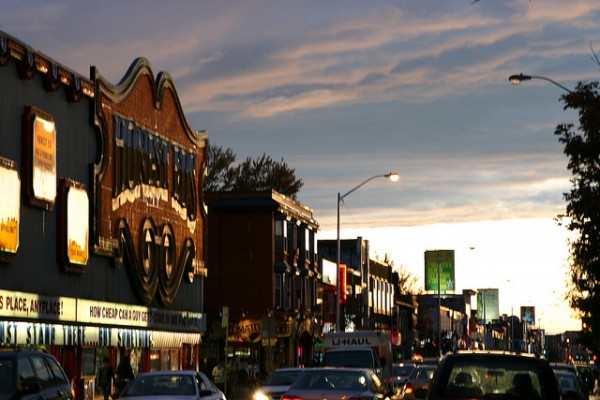
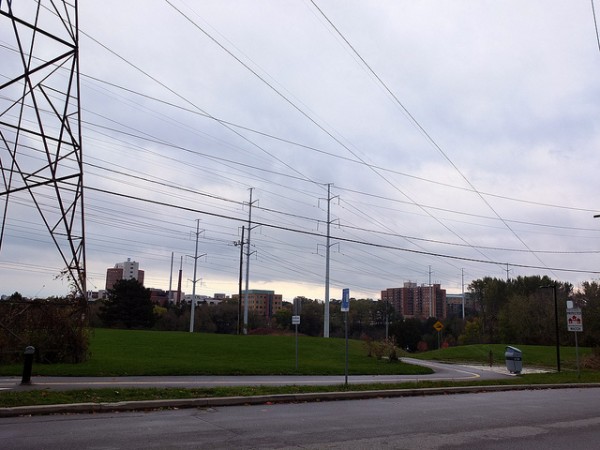
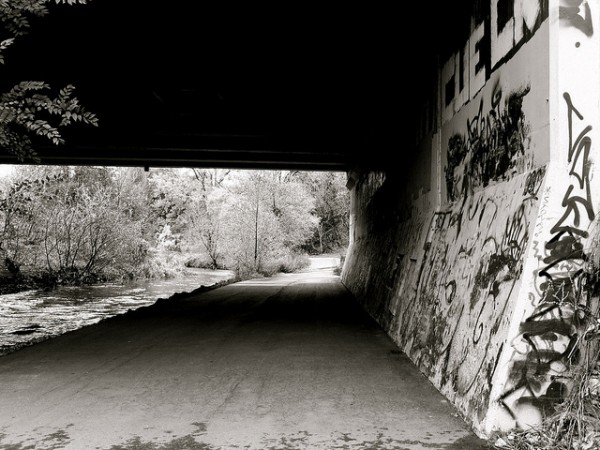
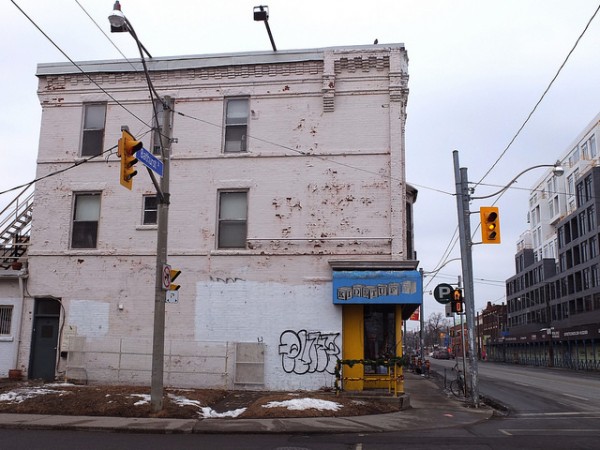
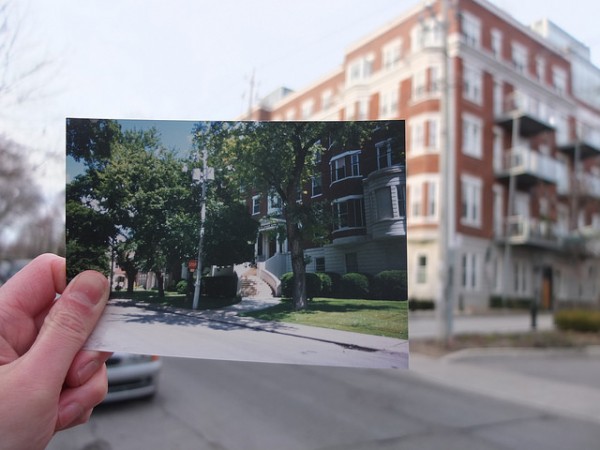
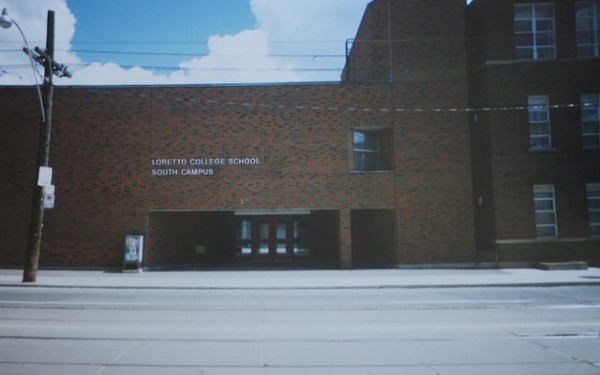
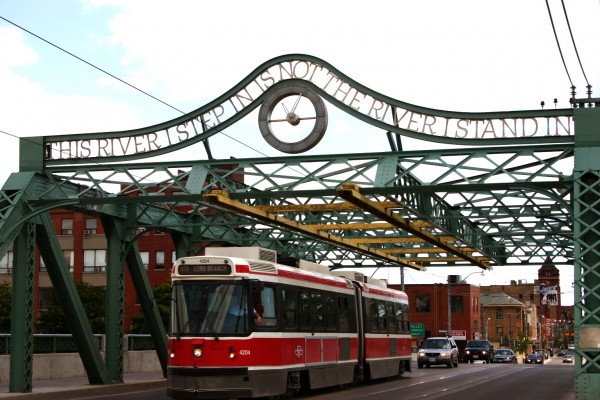

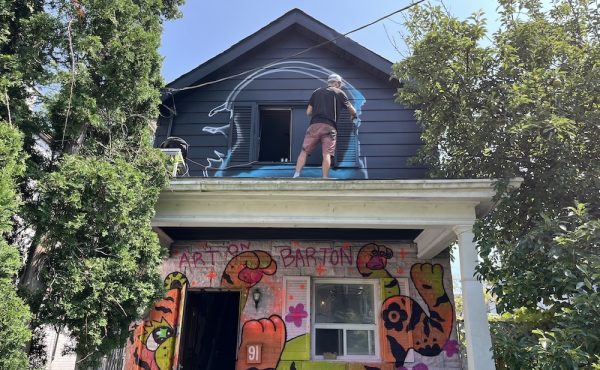
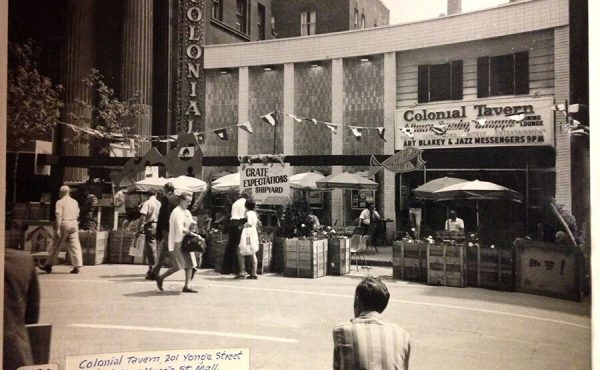
3 comments
Welcome back to Toronto Christina & thanks for the article.
I also just moved back to Toronto after 4 years in London UK. Funny you mention the Queen Street bridge phrase “This river I step in is not the river I stand in” – I thought of it often while in London, and even more that I’m back.
Hmm. I think your perspective Toronto would deepen in appreciation if you lived in Calgary…where I’ve been last 3 years. I lived in Toronto over 20 yrs. in 2 different neighbourhoods….. near Dufferin Mall and later, by Victoria Park Station in Scarborough.
I also lived a cycling lifestyle in that city, so I learned enormously in appreciated of its green, treed interconnected ravine parks and pathway system to east, west, north and south.
Toronto is also more fearless in its citizen expression. It really is Canada’s most multicultural city on sheer scale, diversity and depth/history. I also lived and biked in Vancouver for 8 yrs. It is Canada’s Pacific Rim city…less blacks there… but yes, beautiful in different way and dynamic.
By comparison, Canada’s now fastest growing city, Calgary, is more muted in self-expression beyond the yahoo-cowboy bluster around Calgary Stampede. Less green tree canopy since it’s a prairie city, dustier (because air is drier), downtown core tends to be moribund after business hrs. and on weekends. Oil and gas companies really do rule this town in terms of economy, decisions. (1.3 million people now!)
You have no idea…until you live in Canada’s prairie provinces or a rural area: Toronto can be a bit hyper, but it offers a highly dynamic social-cultural-arts milleu.
I noticed there still no Spacing regular column on Calgary: I’m not surprised. We’re still trying to figure out ourselves, while nose to the grindstone trying to make money before the next local economic bust.
Spacing Calgary is still on the horizon Jean, just taking longer. Calgary actually more exciting to cover than Toronto, in terms of potential and exciting. Toronto, even being just slightly older, has baggage.